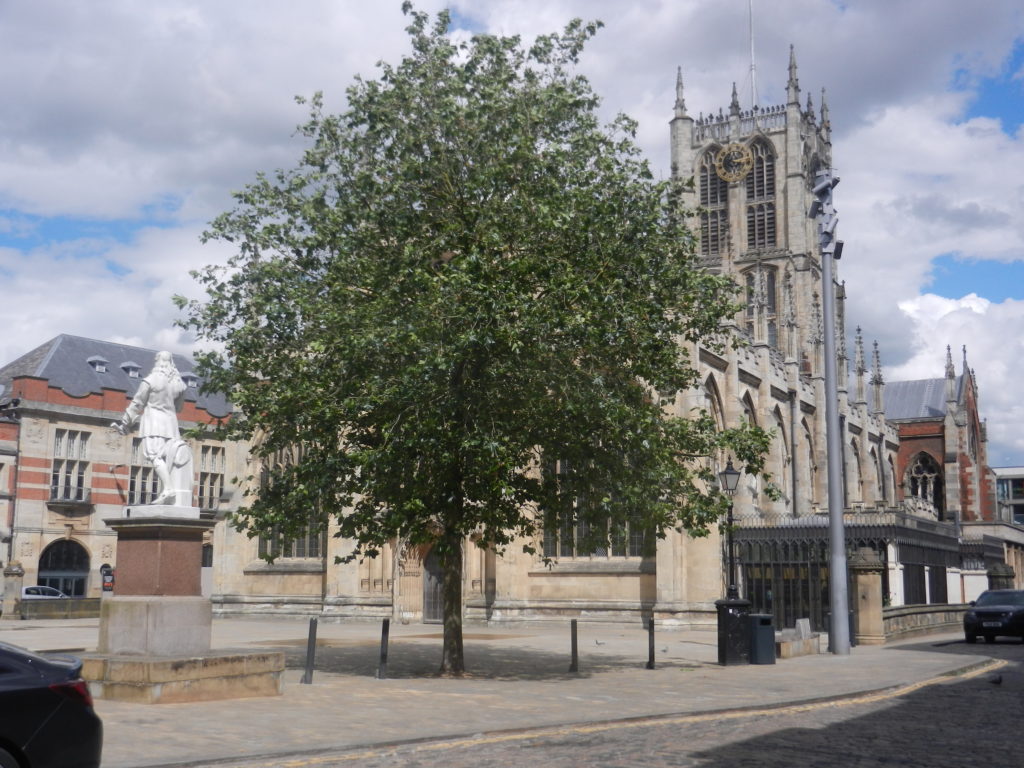
Apparently the word ‘plane’ goes back to early modern times in both French and English to identify this tree, although the word may have ancient Greek origins, and certainly one strain of plane tree is native to the eastern Mediterranean region. So the plane tree cannot be classed as a native species (s.p.b.s) and was probably introduced around Tudor times. However, it is not impossible that it may have self-seeded as the single seeds are very light-weight and have a wing to carry them on the wind (see later).
Today’s photo shows a young plane tree planted at the side of Minster Square with the west front of Hull Minster church (Holy Trinity church) in the background. Up to about 100 years ago the tree at that point would have stood at the edge of Holy Trinity’s churchyard. Since the late 18th century burials in the parish of Holy Trinity had been conducted in a succession of three detached burial grounds, so, despite this being a burial ground for c.400 years it had not required a high retaining wall as did many urban churchyards.
As seen from this photo plane trees tend to have quite long trunks before the main branches strike out, although with age the lower branches tend to sag. Also seen is the ‘tidy’ rounded canopy of the plane tree, this giving it a popularity for when ornamental tree planting schemes.
To the best of my knowledge plane trees were rarely chosen by designers of municipal parks in late Victorian times. However, by then, and more so in the 20th century, they became very popular choices for planting on residential streets and squares; this resulting in the term ‘London plane’ as a result of its popularity in the capital city. Added to this ‘London plane is said to be very resistant to urban pollution, shedding particles of pollutants by having a ‘flaky trunk’.
(to be continued)